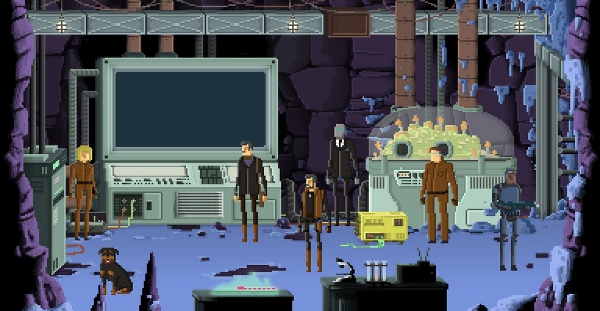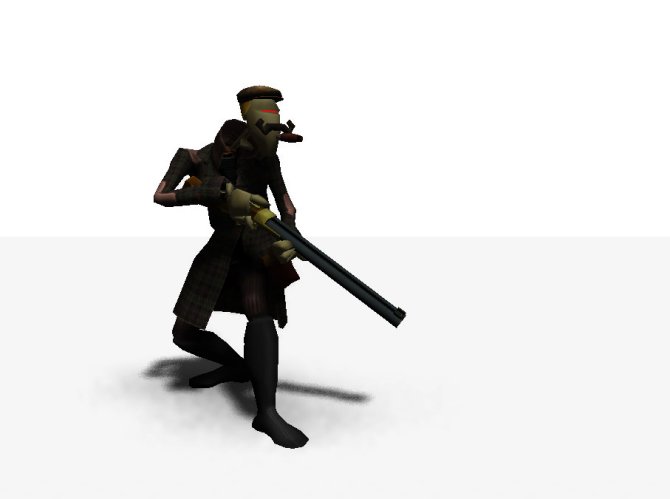firehose
Shared posts
Dubai's First Farmers Market
Dogs Use Color Vision After All
Framing Children’s Deviance
|
Courtney
shared this story
from |
|
| Good reading for today. |

Leontine G. sent in a troubling example of the framing of children’s deviance, and their own complicity in this framing. She included two links: one to a Today show story about a 7-year-old boy who took his family’s car on a joyride and got caught by police, and one to a CNN story about a 7-year-old boy who took his family’s car on a joyride and got caught by police. Different 7-year-olds. One white, one black.
The white boy, Preston, is interviewed with his family on the set of the Today show. Knowing his kid is safe, his Dad describes the event as “funny” and tells the audience that if this could happen to a “cotton candy all-American kid like Preston,” then “it could happen to anybody.”
When the host, Meredith Vieira, asks Preston why hid from the police, he says, “cause I wanted to, and she says, “I don’t blame you actually.” With Preston not too forthcoming, his Mom steps in to say that he told her that “he just wanted to know what it felt like to drive a car.” When Vieira asks him why he fled from the police, he replies with a shrug. Vieira fills in the answer, “You wanted to get home?”
Vieira then comments on how they all then went to church. The punishment? Grounded for four days without TV or video games. Vieira asks the child, “Do you think that’s fair?” He says yes. And she continues, “Do you now understand what you did?” He nods and agrees. “And that maybe it wasn’t the smartest thing?” He nods and agrees. “You gonna get behind the wheel of a car again?” He says no. Then she teases him about trying out model toy cars.
They conclude that this incident just goes to show that “Any little kid, you never know what can happen…” and closes “I’ll be seeing you at church buddy boy!”
The video:
All in all, exactly what you’d expect from the Today show: a heartwarming, human interest story with a happy ending. The child is framed as a fundamentally good kid who was curious and perhaps a bit impetuous. When he has no answers for Vieira’s questions, she slots in innocent ones. And the mild punishment is seen as incidental to the more important idea that he learned something.
This story contrasts dramatically to the CNN story about Latarian Milton, a black 7-year-old who took his family’s car on a joy ride. I’ll put the video first, but be forewarned, it’s disturbing not only because of the different frame placed on the boys actions, but because of the boy’s embracing of the spoiled identity (apology for the commercial):
With an absolutely polar introduction of “Not your typical 7-year-old,” this story is filmed on the street. Whereas the Today show screened the chase footage in real time, this one is sped up, making it seem even more extreme.
The interviewer, off-camera, asks Latarian why he took the car. He replied: “I wanted to do it ’cause it’s fun, it’s fun to do bad things.” The interviewer asks further, “Did you know that you could perhaps kill somebody?” And he replies: “Yes, but i wanted to do hoodrat stuff with my friends.”
The interviewer asks him what punishment he should receive and Latarian offers a punishment very similar to Preston’s: “Just a little bit… no video games for a whole weekend.” In a more longer version of this news story, now taken down, the camera focuses on a reporter who explains that the police plan to go forward with charges of grand theft against him. While he’s “too young to go into any type of juvenile facility,” he says, “police say they do want to get him into the system, so that they can get him some type of help.”
The implication here, of course, is that this child is not innocent or impetuous like Preston, he’s a pre-criminal who needs “some type of help.” The sooner they get Latarian into “the (prison?) system,” the better. No cotton candy kid this one.
Unfortunately, Latarian says all the right things to make the narrative fit. He says he likes to do “bad” things, calls himself a “hoodrat,” and seems unremorseful, even defiant, for at least part of the interview (he looks a bit sheepish in the end when he finds out his grandmother is going to have to pay for the damage he did to other cars).
One way to interpret this is to say that Latarian IS a pre-criminal. That he DOES need to get into the system because he’s clearly a bad kid. Someone inclined to believe that black people were, in fact, more prone to criminal behavior could watch these two videos and feel confirmed in their view.
But there is good evidence that people, beginning as children, internalize the stereotypes that others have of them. As Ann Ferguson shows in her book, Bad Boys: Public Schools in the Making of Black Masculinity, black children, especially boys, are stereotyped as pre-criminals; not adorably naughty, like white boys, but dangerously bad from the beginning. And studies with children have shown that they often internalize this idea, as in the famous doll experiment in which both black and white children were more likely than not to identify the black doll as bad (see this similar demonstration of white preference on CNN and a discussion of the original doll experiment at ABC). So I think this terribly sad story of Latarian is showing us how children learn to think of themselves as deviant and bad from the society around them. Latarian, remember, is seven, just like Preston. They’re both children, but they are being treated very differently, as these programs illustrate, and it is already starting to sink in.
Originally posted in 2010. Re-posted in solidarity with the African American community; regardless of the truth of the Martin/Zimmerman confrontation, it’s hard not to interpret the finding of not-guilty as anything but a continuance of the criminal justice system’s failure to ensure justice for young Black men. Crossposted at Racialicious and Love Isn’t Enough.
Lisa Wade is a professor of sociology at Occidental College. You can follow her on Twitter and Facebook.Beijing’s hot new business: marrying and divorcing foreigners who want to invest in real estate

Foreign men used to be accused of heading to China to find a wife. Now they go there in search of an ex-wife.
Or at least, that’s what some of them have been doing. A recent audit of Beijing real estate purchases revealed a growing side business among real estate brokers: finding an eligible Chinese woman willing to marry a foreigner so that he could buy an apartment or two, and then promptly divorce him (link in Chinese), as the Beijing New reports. The two brokerage agencies that the government cracked down on had already arranged 17 “divorce support” marriages. One Beijing woman involved in the business had married and divorced three men in five months.
Why would either party want to do this? Buying homes in China is very difficult for foreigners. To be eligible, foreigners typically must provide the authorities with five consecutive years worth of Chinese tax receipts. That policy has barred newcomers and the unofficially employed from property investment.
However, foreigners married to Chinese nationals are allowed to buy up to two homes, no tax documents needed.
It’s a way of limiting speculative investors from entering the market to keep a lid on the country’s bubbly housing market, long a struggle for the Chinese government and a source of public ire. Among Chinese nationals, divorce is already a popular way of sidestepping property restrictions.
It’s unclear how long the “divorce support” business has been going on, but the Beijing News report said a random sweep of real estate brokerages in a foreigner-heavy area of Beijing suggests that the practice is fairly widespread. The report said that the fee for “divorce support” runs between $4,900 and $8,150. And it’s not just men who benefit. Some brokerages offered temporary husbands to enterprising foreign women.
But why would foreigners who aren’t planting roots in Beijing want to buy into the likely property bubble? After all, Beijing’s prices are already off the charts:

But after a lull in 2012, the investments are popular again (note that it includes commercial and residential property, though):

That might be because the market shows few signs of peaking. Despite slowing growth and new measures to control the market, real estate investment continued to boom in the first half of 2013. Total investment in real estate (including both residential and commercial) surged to nearly $600 billion in H1 2013 (link in Chinese), a 20.3% increase from H1 2012.
Photos of Golf Ball Cross-Sections Reveal Colorful Interiors
The remarkably varied and colorful interiors of golf balls are revealed in the photo series “Interior Design” by photographer James Friedman.
via Feature Shoot
Historical Map: Bank-Monument Tube Stations Cutaway (1990s?) Not...

Historical Map: Bank-Monument Tube Stations Cutaway (1990s?)
Not a traditional transit map per se, but a stunningly beautiful technical illustration of the interlinking tubes and tunnels that form the connected Bank-Monument tube station complex in London. Built as separate stations, but linked by escalators in the 1930s (the depiction of which proved a permanent puzzle for H.C. Beck on his Tube Map), the complex is the ninth-busiest London Underground station,
What I love here is that we’re looking at over 100 years of infrastructure development: the original Monument station (first called “Eastcheap” and then “The Monument”) opened in 1884; the “City” end of the Waterloo and City Line in 1898; Bank station (named after the Bank of London) opened in 1900. Over 100 years after the first part of the complex was opened, the deep station for the DLR was completed in 1991.
Compare to a similar cutaway of the Hudson River Tubes from 1909.
(Source: Original source unknown, image from skyscrapercity.com forum post)
Flashback remake dev diary discusses making the original
A new behind-the-scenes video from Ubisoft features developers on 1992's Flashback and its current-gen remake discussing what went into the original and how to preserve it.
Flashback started life as an attempt to transpose the plot of The Godfather into a futuristic setting by French developer Delphine Software. When the executives saw the original pitch, says game director Paul Cuisset, they were blank-faced because they realized it barely resembled the hit film. However, they saw promise in the concept nonetheless and told Delphine to pursue developing it as an original story.
The remake of Flashback embodies its essence as a product of the 90s, says scenarist Kurt McClung, and the game will be very referential to movies like Blade Runner and Total Recall that inspired it in the first place.
It was important to preserve moments and design elements from the original, say the developers, but the gameplay has changed: Among other things, the combat was very limited in the original. "Even if it still worked really well," says Cuisset, "I think that it really needed to be dusted off."
Flashback hits PlayStation Network and Xbox Live Arcade in August.
Why Is Netflix Secretly Cropping Movies?
Watch Gods Will Be Watching Expand Into A Full Game
firehose<3 <3 <3
By Nathan Grayson on July 17th, 2013 at 12:00 pm.

Gods Will Be Watching is one of the absolute best jam games I’ve ever played. The original, still-free version is remarkably robust for having burbled together in the cauldrons of Ludum Dare in a mere 48 hours, and its concept is wickedly inventive despite that. Basically, it’s Oregon Trail meets the creeping madness of insurmountable catastrophe, with your band of survivors slowly bleeding sanity as time, hunger, sickness, and the elements take their toll. It’s an incredibly bleak little thing, but a massively interesting one. But now would you look at it? It’s all growed up! Or at least, it will be assuming it rakes in a little spending money on Indiegogo.
The expanded version won’t simply toss you back into the same 40-day disastertastrophe with a few extra toys. Rather, Gods Are Still Watching So Don’t Get Any Funny Ideas is about creating new, equally devastating dilemmas around the same core set of ideas. Deconstructeam explained:
“The remake won’t be just about surviving on a hostile planet, but to overcome several difficult situations that will expand both the storyline and universe of sergeant Burden and his crew, and will offer new moral dilemmas in order to stay alive.”
“We designed 6 different scenes which we expect will put you under interesting stressful situations, what kind of leader you will be? Also, we put a lot of effort in making every stage unique, don’t expect to see the same puzzle twice. For example: test experimental vaccines on your partners in order to find a cure to the virus that’s running through your veins and will kill you all in less than 48 hours… or just endure through 20 days of torture.”
Also on the docket: more robust AI for your companions, better rewards for actually completing scenarios, and challenges for those who want extra variety. Also, the ability to kick people while they’re on the floor. And hopefully more dogs. But hopefully not the ability to kick dogs. If one of the morally brutal scenarios is 20 Days Of Puppy Executions, then count me out.
The team is asking for 8.000€. So far, they’re more than a fourth of the way to their goal, so that’s a good sign. I’m a bit worried that the new scenarios could push things into ridiculously melodramatic “too far” territory, but we’ll see. Are you glad that this one’s shaking off its developmental permafrost and having another go at survival?
'Rolling Stone' sparks outrage with cover photo of Boston bombing suspect
firehoseOH NO
SOMEONE WHO CAN COMMIT TERRIBLE ACTS TOOK A DECENT SELFIE ONCE
CIVILIZATION IS CRUMBLING~
Rolling Stone is facing harsh criticism for publishing what many describe as a rock star-like cover photo of Dzhokhar "Jahar" Tsarnaev — the 19-year-old native Chechen accused of carrying out the Boston Marathon bombings on April 15th. The magazine unveiled the cover of its August 1st issue on Tuesday, describing Janet Reitman's lead story as "a riveting and heartbreaking account of how a charming kid with a bright future became a monster." Rolling Stone also highlighted the piece's most salient revelations, but it's the issue's gauzy cover photo that has stirred the most controversy on Twitter and other social media sites.
The backlash spread quickly across the internet Tuesday evening, with many Twitter and Facebook users describing Rolling Stone's photo choice as and Some have argued that the softly lit self shot only glamorizes Tsarnaev's acts, and that it will only fuel his small but devoted group of sympathizers.
Members of the so-called "Free Jahar" movement gathered outside a Boston courthouse last week when Tsarnaev made his first public appearance since being indicted on 30 federal counts. Some donned t-shirts that read, "Dzhokhar Tsarnaev Is Innocent," while others held signs alleging that the teenager is a victim of some larger conspiracy or false flag operation.
Some Tsarnaev supporters were actually upset over Rolling Stone's decision, claiming that the magazine unfairly labeled him guilty before his trial has begun. Tsarnaev has pleaded not guilty on all 30 terror charges.
Rolling Stone's image, pulled from Tsarnaev's Twitter profile, has appeared in other media outlets before — most notably, on the cover of the New York Times. But for many, the cover of Rolling Stone carries a different iconography, one associated more with rock stars and celebrities than suspected terrorists. (Dr. Hook & The Medicine Show famously sang about the magazine — and the success its coverage can bring — in its 1973 single "The Cover of Rolling Stone.")
Tsarnaev's curly locks and intent stare have already drawn comparisons to others who have graced the magazine's cover, including Jim Morrison and Madonna. It doesn't appear that the magazine dramatically modified or enhanced the image, based on original versions that surfaced online in April.
According to Rolling Stone, Reitman spent two months interviewing "dozens" of people close to Tsarnaev, including childhood friends, teachers, and neighbors. In the piece, she describes Tsarnaev's gradual transformation from normal teenager to suspected terrorist — a metamorphosis that was spurred both by his unstable family and the psychological frailty of his older brother, Tamerlan. The elder Tsarnaev was killed during a shootout with Boston police in April, and is widely believed to have played a critical role in pushing his younger sibling toward radical Islam.
The Verge has reached out to Rolling Stone for comment.

A screenshot of Rolling Stone's Facebook post, and the virulent comments it inspired.
- Source Rolling Stone
- Related Items dzhokhar tsarnaev twitter social media terrorism crime free jahar boston magazine rolling stone boston marathon bombing
Hungry Canadian Aboriginal Children Were Used In Government Experiments During 1940s, Researcher Says
firehosegreat
Reviewed: Logos for the 2020 Summer Olympics Candidate Cities
firehoseLove the Baku one; agreed that they slaughtered the Madrid contest winner's; could take or leave the rest
The Spirit is Weak with these Ones


The XXXII Olympic Summer Games in 2020 will be hosted by one of three candidate cities: Madrid, Istanbul, or Tokyo, following the 2016 games in Rio De Janeiro. The three candidates were selected by the International Olympic Committee out of a group that also included non-selected applicant cities Baku, Doha, and Rome (which withdrew its bid shortly before the applicant files were due). The International Olympic Committee will elect the host city on 7 September 2013. Here is a look at the logos of each of the hopefuls (and not so hopefuls).

2020 Candidate Cities
Madrid / Design by Tapsa and original designed/concept by: Luis Peiret

The year 2020 will mark Madrid's third consecutive attempt for the summer games--but this third time is not the aesthetic charm. The final mark, which was released in January of 2012, is the bastardized child of the Spanish Olympic Committee's marketing plan to open source the mark design through a national competition.

Luis Peiret's playful and abstract representation of the Puerta de Alcala (above) -- in which the five arches of the Puerta de Alcala represent the five continents -- was selected. It was a handsome and strong mark that clearly and strongly stated the personality and fortitude of Spain, but was then heavily modified. The final "20020" mark is an example of "design by committee" and the failures that come with such additional involvement. The fresh cut to the base of the logo gives a nice crown-like shape to the overall mark; however, this is the only nice thing I have to say.
The legibility of the original "M20" script was completely discredited upon manipulation and severely criticized by the country as a whole, being mocked via the Twitter hashtag #Madrid20020. The alterations continued with the removal of the original color gradients--doing away with black entirely--switching instead to flat colors and the color purple, thus misrepresenting the five Olympic colors. The final and possibly most embarrassing error was the misspelling of Madrid with the addition of an accent over the "i."
Let this be a clear lesson in the power of intellectual property to young designers and design students: own your work. Thankfully, the Spanish can breathe a sigh of relief since this is just the bid and won't represent the final games in "20020" if they come to Spain.
Istanbul / Design by N/A

This will be Istanbul's fifth attempt to bring the Olympic Games to Turkey, having previously submitted four different bids (2000, 2004, 2008, and 2012), two of which have led to Olympic candidacy (2004 and 2008) though ultimately failing to be awarded the Games.

Istanbul was awarded the candidacy to host the 2020 Games in May of 2012, winning this honor thanks to an untraditional "pattern mark." The simply-complicated, mono-weight pattern is a fresh point of view for branding the Games. Its heavily horizontal orientation is something that has never been seen in and Olympian mark--I appreciate that. The pattern mark had massive potential to expand however with the announcement of Istanbul's candidacy, the Turkish IOC released an online vote in which the public can choose between five Tulip marks, each nearly as disappointing as the other.

The final mark that was selected for Istanbul's candidacy is a painterly version of a tulip--a traditional symbol for the city--that contains elements of Istanbul's skyline which revolve around the Maiden's Tower. Conceptually, the upper orange portion of the mark not only symbolizes a sunset over the city but also the European side of Istanbul, while the lower potion, which is separated by the Bosporus, represents the Asian side and the city as a whole with traditional turquoise symbolizing Turkish culture--the turquoise gem having origins in Turkey.
However conceptually sound, the mark's aesthetics do not mix well. The paint-like texture of the tulip clashes with the realistic, vector based cityscape. The designer should should have limited him/herself to concentrating on one cohesive look. The mark feels even further disconnected through its accompanying modern and disproportional typeface. The kerning is quite silly and rushed, providing a disappointing base for the mark.
Another mark that was clearly designed and then convoluted by an indecisive committee.
Tokyo / Design by Ai Shimamine

Tokyo, who hosted one of the most beautifully branded Games in 1964, was selected as a Candidate City for 2020 in September of 2012. Originally considering Hiroshima as the main bid for the 2020 Games, Tokyo was ultimately selected by the Japanese IOC after poor public reaction and funding issues for the first bid.

The mark was designed by fourth year student Ai Shimamine, who participated in a design competition to create a logo for Tokyo's bid. The circular wreath of cherry blossoms, Japan's most celebrated flower, takes the cake for cultivating a happy, peaceful, and comforting feeling (something the other two Candidate Cities don't take advantage of), setting Tokyo apart from the playing field. The circular shape symbolizes a sense of eternity; accompanied by the playful cherry blossoms, it further evolves to express the eternal happiness which the Games inspire. Each individual petal within the circular wreath shape of the cherry blossoms represents the interconnectivity and interdependence of the world.
Accompanying the Olympic colors, the design incorporates a traditional Edo period purple, which was used in cultural festivals and events during that time--a simple and comforting connection back to Japanese heritage.
A mark that is fully thought through to the smallest "Rising Sun" detail that divides the type is, hands down, my favorite mark of the three Candidate Cities. It is a reminder that once every four years I become a kid again, full of excitement and hope. Congrats to Ai Shimamine on making her country proud.
2020 Non-selected Applicant Cities
Doha / Design by N/A

While failing to become a Candidate City for the 2020 Games (in addition to a 2016 attempt), the mark presented by Doha was inspired by the Arabic word for Doha, "ad-dawha," which translates to "the big tree." This is a reference to the prominent tree that stood at the site where the original fishing village arose on the eastern coast of the Qatar peninsula, and it is considered to be a symbol of cultivation.
The Doha Olympic Committee used this inspiration to create an edgy, youthful, and fruitful mark that feels tailored to the sleek, Armani Exchange-ish life that can be had in Qatar. The dark colored trunk of the mark illustrates the region's strong historic heritage, while the lively firework-like leaves display the excitement and growth of the city and the Games to come.
The clever addition of purple to the mark, which is the color of the Qatari flag, links the people of Qatar back to this international competition and furthers Qatar's presences in the Olympic community--something that Madrid should learn from.

With that said, I'm sad to report that the tailored typeface works but is a bit expected. The type as a whole feels like a missed opportunity to play with contrasting shapes and to really let the mark vibrate in a good way. There are only so many tailored curves one mark can handle, and the Doha mark has reached that limit.
Overall, the mark was a move in the right direction, with its simple formal shapes and clever coloring. It is a mark that easily benefits the branding as a whole through its readiness to be dissected into patterns, shapes, and icons to carry the Qatari story from beginning to end. Sadly, the games will pass over Doha in 2020. Here's to seeing what handsome mark the Qatar Olympic Committee creates for the 2024 bid.
Baku / Design by N/A

Baku, Azerbaijan also participated in bidding for the 2016 Olympics which were ultimately given to Rio de Janeiro. With high hopes, Baku submitted its second bid for the 2020 Games with a beautifully inspired Azerbaijani carpet mark.
Baku's mark rallies behind the concept and slogan of "Together We Can" and does so in an iconic and sophisticated manner. The weave of the four individual pieces subtly spells out Baku's "dream date" of 2020 in a Pentagram-like "ah-ha" moment. That feeling of surprise, excitement, and discovery illustrates what the games are all about.
The strong, geometric mark embraces subtle and carefully-handled gradients that help diversify the primary colors--simple yet complicated, in other words--creating a pleasant and harmonious feel. The neutrality of the mark lets each individual associate his or her own meaning to the mark and in turn creates a stronger bond with the Games in Baku. This is a symbol that any athlete would tattoo on themselves.
Unfortunately, in May of 2012 it was announced that Baku had not been selected as a Candidate City. A shame to see such a handsome mark be washed away.
Rome / Design by N/A

Rome previously hosted the 1960 Summer Games and failed to hold the 2004 Games to Athens in a final round of voting by the IOC. Rome developed a bid for the 2020 Games after being nominated by the Italian National Olympic Committee, but the Italian government withdrew its support from the bid on the eve of the delivery of the application files, stating that it would not be a responsible use of money in "Italy's current condition."
The mark that accompanied the failed bid is a simple and awkwardly drawn illustration of the Colosseum that was born out of the conceptual statement: "A time of history." The mark itself feels rushed--with how the bid ended, I would not be surprised if it was done under several restrictions. The misproportioned mark is neither distorted nor refined enough to look purposeful and and falls into the grey area of an amateur and naive designer. Accompanied with a lackluster color gradient, it is easy to say that this is a blatantly missed opportunity to demonstrate Rome's history though a single mark.
Thankfully, Da Vinci won't be turning in his grave since Rome's bid never saw the light of day.

Joe Nocera, embarrassment.
firehose"if he's too lazy or stupid to get with technology, which today is incredibly dumbed-down and easy to learn -- then they should get a person Nocera's age who's not so quick to give up on themselves. ... The Times is doing its readers a disservice by telling them a 61-year-old can't understand the arc of tech. Go the other way. Set the expectation that they can."
bonus angry Diane Rehm for saucie
 Joe Nocera, columnist for the NY Times, has waved the technological white flag of surrender on behalf of his generation.
Joe Nocera, columnist for the NY Times, has waved the technological white flag of surrender on behalf of his generation.
In a recent column he said: "I acknowledge I’m at the age where I’m losing the battle to keep up with technology."
That's such crap. This is a columnist at the NY Times? He's willing himself into obsolescence. My own opinion -- if he's too lazy or stupid to get with technology, which today is incredibly dumbed-down and easy to learn -- then they should get a person Nocera's age who's not so quick to give up on themselves. This guy is taking up space and using it for no good purpose. And it's not as if the Times lacks for such willful ignorance among its columnists. It's all over the op-ed page.
My recommendation for the Times is that they send Nocera to remedial tech boot camp. Find him a tutor who will tell him how Twitter works. Show him how to take a picture with his smartphone. Show him how to install the Instagram app. In a couple of weeks, he'll see how ridiculous the idea that, at age 61, you can't get on board with the latest mobile technology. It's designed for idiots who can't be bothered to read docs, for crying out loud.
And by the way, no columns about the boot camp while you're in the boot camp.
PS: An even better idea. Get someone Nocera's age who has lived a life in tech, who loves it, and empathizes, and can explain it. There are lots of us. The Times is doing its readers a disservice by telling them a 61-year-old can't understand the arc of tech. Go the other way. Set the expectation that they can.
PPS: Get Diane Rehm to explain it to you. Once a guest on her show said her listeners were too ignorant to understand the First Amendment. She got livid. My listeners are the smartest, most informed people in the world, she said.
Google patches Glass exploit that allowed hackers full remote access
firehoseDREAMS REALLY DO COME TRUE
Security research firm Lookout has discovered a Google Glass vulnerability that allowed hackers to use QR codes to take control of the wearable device. The vulnerability has already been patched by Google, clearing the way for Lookout to detail how the exploit worked. Using a "malicious" QR code, Lookout was able to force Glass to silently connect to a Wi-Fi access point, which let the researchers view all of the data flowing to and from the device. When combined with an Android 4.0.4 web vulnerability, the hack apparently gave researchers full control of the Glass headset. It's worth noting that this method relied upon a number of factors, and was extremely unlikely to see widespread use.
As SlashGear reports, Glass's QR code issues center on the way Google asks users to set up their device. Prior to the update, Glass would silently and automatically act on QR codes in images taken with the headset's built-in camera. While this made setting up Glass slightly easier than navigating through a vast number of menus, it also left the door open. It's good to see Lookout and Google working together to quietly fix Glass issues before they reach the public domain, but the exploit also highlights the challenge the Google will face to keep its entirely-new hardware secure when the device hits the mainstream.
Photo
firehosealways knew Wendy had some doom metal to her

US Gov Sues The Art Institutes for $11 Billion Fraud
![]()
The Art Institutes, one of the nation’s largest for-profit school systems where people can receive an education in photography, has come under fire. Last month, the US Department of Justice filed a massive lawsuit against the company behind the schools, Education Management Corporation, accusing it of fraudulently collecting $11 billion in government aid by recruiting low-income students for the purpose of collecting student aid money. Whistleblowers claim that students graduate loaded with debt and without the means to pay off the loans, which are then paid for with taxpayer dollars.
David Walker at PDN writes,
At the Art Institute of Pittsburgh campus alone, there were reportedly about 600 photography students pursuing a bachelor of arts or associates degree as of last summer, says Kathleen A. Bittel, the whistleblower whose testimony before a US Senate committee last fall helped trigger the federal lawsuit against EDMC.
[...] “Where are 600 photography graduates going to go? You cannot absorb that many in one city. How are they going to make money?” she says.
Bittel says EDMC had plans last summer to increase its photography student enrollment by adding a 12-15 month diploma to the program. The new degree was intended to attract students who wanted a “quick fix” in the form of a degree they could earn faster than an associate’s degree with minimal effort, Bittel says. “If the bachelors students can’t find jobs, where are the students with [12-month diplomas] going to go?”
One former student they contacted commented that, “It’s like they’re pumping photographers out like little cookie cutters.”
Nintendo trademarks suggest new Seaman games in the works
firehoseSeaman?!?!
Two trademarks filed by Nintendo suggest the half-man, half-fish virtual pet Seaman could be getting a revival, according to Japanese blog Esuteru.
In Japan, Nintendo has registered trademarks for "Mysterious Pet: Legend of the Fish With A Human Face" and "Mysterious Partner: Legend of the Fish With A Human Face," both of which point to developer Vivarium's games starring the infamous creature. Current rumors point to the possible new game being released for the Nintendo 3DS.
In 2010, Seaman creator Yoot Saito teased via Twitter that he was working on something related to Seaman. In early 2012, Japanese publication Nikkei reported Nintendo was involved in rebooting the series.
Seaman originally launched for the Sega Dreamcast in July 1999 in Japan and the following year in North America. The game was ported to PlayStation 2 in Japan in 2001. A sequel, Seaman 2, was released for PlayStation 2 in 2007. In the games, players were tasked with caring for their Seaman fish, which sports a human face based on Saito's own image. The original game's English version was narrated by Leonard Nimoy and emphasized use of the Dreamcast's microphone peripheral.
In Wake of Zimmerman Verdict, Obama Makes Extensive Statement on Race in ... - New York Times
firehose"My prayers are with all those who have the influence and power to modify the laws that left me with no verdict option other than 'not guilty' in order to remain within the instructions. No other family should be forced to endure what the Martin family has endured," (B37) wrote.
The juror, who was interviewed by CNN, said she will not grant other interviews and wants to get back to a normal life. "For reasons of my own, I needed to speak alone," she said.
She issued the statement after four other jurors said the opinions she expressed on "Anderson Cooper 360" were "her own, and not in any way representative" of all the jurors.
In her CNN interview, which aired in two parts Monday and Tuesday nights on AC360, the juror said she believes Zimmerman didn't do anything unlawful and was "justified" in shooting 17-year-old Trayvon Martin.
NPR |
In Wake of Zimmerman Verdict, Obama Makes Extensive Statement on Race in ...
New York Times WASHINGTON — President Obama, making a surprise appearance on Friday in the White House briefing room to address the verdict in the Trayvon Martin killing, spoke in personal terms about the experience of being a black man in the United States, trying ... African-American leaders hail Obama's remarks as a major step forwardCBS News President Obama: “Trayvon Martin could have been me.”MiamiHerald.com Essay: President Obama's deeply personal take on the Zimmerman verdictWashington Post USA TODAY -Los Angeles Times -ABC News all 4,319 news articles » |
How Panama found a missile and a couple of fighter jets in a North Korean freighter
firehose"This isn’t the first time the Chong Chon Gang has been caught riding dirty."

This may be the most important tweet in the history of arms control:
Panamá capturo barco de bandera Norcoreana proveniente de cuba con cargamento bélico no declarado http://t.co/MdWGfbXvVJ—
Ricardo Martinelli (@rmartinelli) July 16, 2013
That’s Panama’s President Ricardo Martinelli revealing missile parts concealed beneath a cargo of Cuban sugar. The compartment was discovered in the North Korean freighter Chong Chon Gang, homeward bound from Cuba. Law enforcement seized the vessel as it traversed the Panama Canal, subdued a rambunctious crew and a captain who reportedly preferred suicide to capture, and discovered a load of what Cuba calls “obsolete weapons“—”two anti-aircraft batteries, nine disassembled rockets, and two MiG-21 aircraft,” apparently heading to North Korea for repair. The sugar, some theorized, was a payment for the work.
How did Panamanian authorities catch this big fish? Well, it wasn’t as hard as you might think.
- This isn’t the first time the Chong Chon Gang has been caught riding dirty. In 2010, Ukranian authorities found over a hundred capsules of codeine on the freighter, along with AK-47 ammunition the captain said he traded with Somalis for food, 23 bottles of brandy and a secret compartment containing even more illicit drugs. North Korea’s government has a reportedly lucrative drug business.
- The ship strayed out of home waters. After the Ukrainian incident, arms trafficking expert Hugh Griffiths began monitoring the vessel’s location, mostly in Asian and European waters. It hadn’t visited the Western Hemisphere since 2009, so when it set course for Cuba, maritime observers took notice. After crossing the canal on May 31, it apparently shut off its automatic tracking system, only reappearing again on July 10, raising something of a red flag. On July 3, meanwhile, a North Korean military delegation visited Cuba.
- The North Koreans are always getting caught in the arms business. The country supplied 40% of the ballistic missiles (pdf) purchased by developing nations between 1995 and 2009. Clients have included Pakistan, Iran, the Congo and Libya, and parts have been frequently seized, most recently in 2010 at the Port of Piraeus in Greece and 2009 in Thailand.

- They may have had US help. US authorities have been praising Panama’s decision to search the Chong Chon Gang. While it’s not clear how much information from US intelligence sources played into the capture of the freighter, it’s known that they keep close tabs on North Korean vessels.
While the fate of the 35 crew members and their captain remain unclear, Martinelli’s government has said that it will relay the matter to the United Nations. Inspectors will determine whether Cuba and North Korea violated security council sanctions on weapons trade. Whether that conclusion will matter to the governments in frequently intransigent North Korea is an entirely separate question. But it’s a setback for Cuba’s government, which has hoped to cultivate better relations with the United States.
The horror of being hunted by chattering, gentrified robots
firehose' "We wanted to make it like the vein of 1960s and 1970s TV in the UK, that's kind of like wacky and kitsch but was also really dark," Rossignol said. "A lot of the early Dr Who's and stuff, although it was like a guy in a rubber suit, always had like really dark undertones, like genuine threat and we kind of wanted to do that."'
Referred to as a "tweedpunk robo-horror" game by developers Big Robot, Sir, You Are Being Hunted abandons players on an island where they are being hunted by tea-swilling, bloodlusting mustachioed robots, for sport.
Despite the inherent humour of being pitted against aristocratic robots clad in tweed, within a few minutes of playing it struck me how creepy it was to be hunted by "sentient" robots within the game's sullen environment. Big Robot founder Jim Rossignol tells Polygon that with these ingredients, the goal was to make the game kitschy but with a genuine underlying threat. The combined result is unnerving — even for a robot-obsessed person like myself.
"We wanted to make it like the vein of 1960s and 1970s TV in the UK, that's kind of like wacky and kitsch but was also really dark," Rossignol said. "A lot of the early Dr Who's and stuff, although it was like a guy in a rubber suit, always had like really dark undertones, like genuine threat and we kind of wanted to do that.
"There's a really strong comedy element but its quite dark at the same time, there is this sense of threat all the time and its one of those things that I think British TV and British science fiction does quite well," he said. "We're happy to roll with it and put stupid jokes in there and still make it a horror game, because it is still a horror game, you are still being brutally murdered by robots."
Players find themselves on an archipelago of islands without a clue, supplies or weapons. In order to escape the islands, they must collect mysterious rune stones, while outwitting the tweed-clad droids. The robots are also hunting for the stones and will set up sentries when they find one. They will also set up sentries if they find kickass weapons in the envirnment to make life difficult for the player.
The goal was to make the game kitschy but with a genuine underlying threat.
The developers of Sir, You are Being Hunted Kickstarted the project earlier this year raising more than double its goal. Currently in closed alpha with the 900 who backed an early access tier, Sir, You Are Being Hunted is tentatively scheduled to see a release in late August 2013 on Windows PC, Mac and Linux. At the moment the alpha holds two fully integrated robots. The only AI implemented in the alpha build we played was the top hat-wearing, pipe-smoking robot hunters, but more will be integrated. At the beginning of the game, the robots are hunting for the player but without much enthusiasm.
"They are quite lazy at that point, they will travel to a point and they'll stop and they'll have a cup of tea and have a chat with each other," Rossignol explained. "And at that stage, at their audio detection range, their visual detection range are quite low and the player is quite safe at that point. As things go on and as things start to heat up, they become much more aggressive they spend much more time patrolling their ability to detect you increases as they get agitated."
What struck me as soon as I started playing was how much more of a cold-sweat thrill it was to be hunted by "sentient" robots, rather than say the usual run-of-the-mill zombies or generic monster found in every other game.
It was unnerving to be in the bleak environment populated by killer robots, even in the early stages of the game where the robots were a little more relaxed and jocular, hearing their mechanical audio or seeing them off in the distance put my hairs on end. Even worse was when they were right behind behind me. Chasing. Bleeping.
It turns out that's not unusual. There is some science behind why that's the case.
Vanessa Evers from the University of Twente, the Netherlands, whose research focuses on human robot interaction, a field studying the way people interact with robots and how robots should behave around people, explained that being creeped out by mechanoids is a known phenomenon.
"From a theory on how people experience robots the uncanny valley could be an explanation," Evers said. "Traditionally the uncanny valley — Masahiro Mori developed this theory, it is a theory and not a proven effect — describes that when something, such as an agent, robot, etc is like a human, it is more familiar and we can predict well enough what it will do. But at some point it is so much like a human, but not quite, that it creeps us out: uncanny.
"I personally feel that we are trained through evolution to see what is 'normal' and when an agent looks very much like a human but something is off and 'not quite right' — eyes, gait, mouth etc," she said. "We notice and feel unsafe, threatened just like you would spotting a drunk person coming down the road."
They were right behind behind me. Chasing. Bleeping.
Plenty of other games feature players coming under threat from other generic monsters, such as zombies, but these games don't illicit the same response as experienced with Sir. Rossignol said the difference between a zombie apocalypse game and Sir, is that the zombie game places the gamer into a messy apocalypse with zombies everywhere and the player becomes the accidental causality. Whereas in Sir, the player is the focus of being hunted and is the whole point of the game. Rossignol also believes the skew is due to the robots' AI and behaviour.
"Well, I guess there is like a malicious intelligence to our robots, we can put a lot of work into how the AI would actually works, to how the robots to feel," he explained. "We did want it to be a malicious intelligence and that is reflected in the way that they actually work and not in the way that the shambling zombie or charging zombie.
"Like, I watched a few players run round a wall and just expect them to have lost the robots," Rossignol said. "They don't. They will hunt you down. They will follow you to the last place they saw you and search the area they lost sight of you and they are constantly hunting. And if they hear each other getting into trouble, they will help each other out."
Evers points out that robots may seem more threatening because of the media's reporting of drones and their role in wars, which may have a feedback effect onto the player.
"Media has fed us the notion of drones hunting for people, perhaps being controlled at a distance or programmed to find and shoot," Evers said. "This lingering thought may become 'reality' when playing the game. Making the threat as perceived through the news more tangible."
She went on to say that the British countryside may add to the feeling experienced.
"It could also be that the nature-like as opposed to urban environment is unsettling." Evers said. "Dusk in a forest like setting is for urban people not the most comfy of environments and could add to the instinct of being hunted."
With the gray skies, fog, dark thickets and drizzle, wandering the in-game environment almost tricked my mind into making my real-world clothes feel damp. The cold environment certainly contributed to the game's creepiness and my general unease.
Before settling with the British moors environment, the team and main programmer, Tom Betts, worked on a sci-fi prototype procedural generator, which they called a "sci-fi cover art generator" due to the "1970s weird desert landscape with an astronaut walking across it" environments it created.
"That really made us laugh," Rossignol said. "And at the same time it wasn't what we wanted to do, and when we came up with the Sir idea, the question was ‘Can we make that that fit to do we want? To make it sort of British?'"
Betts spent several months working on the procedural tech to generate height maps and scenery to mimic the British countryside. As Rossignol explained, there is nothing planned about the British countryside, it consists of centuries of accumulated random roads crossing over each other, resulting in a "messiness works really well with the procedural generation."
"So people are playing it now and saying ‘wow it actually looks like it is actually meant to be like that,'" Rossignol said. "Once we have seen that could work, there was a case of ‘Could we make it a lot more threatening?' I think when you do go out in the countryside in the winter, with the big trees and crows flying over head and it is raining; it can be a pretty dark.

With its roving bands of bots and procedurally generated English landscape, Sir, You Are Being Hunted offers players an environment to experience a potentially unfathomable amount of hair-raising anecdotes:
- Being spotted out in the open with nowhere to hide.
- Getting trapped against a door and taking a few shotgun-blasts pointblank.
- Running through the dark woods to blunder headfirst into a robot.
- Cowering defenseless in the long grass waiting for the hunters to pass only meters away.
"And we just wanted to capture all of that," he said. "We had a vision of to take what was kind of bleak and frightening about the British landscape and put it into a game, and I don't think that anyone has done that not in this sort of countryside way, you see London and stuff in games, but I don't think that you have seen Dorset or Somerset or kind of those farmy farmlands. "
The game's environmental noises also contributed immensely to the general feeling of ill ease, and audio cues play an important role in the game and are a key tool to staying alive. More often than not I was saved from walking dead on into a posse of robots because I heard them before I saw them.
There are also wildlife cues that allow the player read where enemies are in the world, such as birds different types of birds can betray or help a player. Smaller birds being scared into flight from the brush, by either robot or human, serve as "sign posts" and won't be investigated by robots. However, larger birds that roost on the ground will be investigated by robots if they are disturbed.
"We have done quite a lot of work on that," Rossignol said. "I think functionally it works really well at the moment so we can read the sort of the audio landscape really well and get a lot from it."
The developer believes audio is currently the most undeveloped area of the game. But with the help of audio engineer Alistair Lindsay — who has worked on audio for various indies in the UK — it aims to do a complete overhaul of Sir's audio to make it more pronounced by adding more ambient environmental noises and redoing the robots' sound effects.
"We live out in the British countryside anyway, so we see this kind of pipe-smoking, right-winger stuff going on day-to-day."
"At the moment you get that bleep when they have seen you and you can just about make out that they are having discussions and so on," Rossignol said. "What we actually want to do is change the register and tone of their robotic kind of chatter so that you can tell when they are in the hunt mode versus when they are joking and having a cup of tea. That stuff is already in some way. I don't think what we have done with the audio is really subtle, we have just find what works and just hammer it in. But it does its job at the moment."
Rossignol believes that audio is one aspect in games that gets ignored because they are so graphic orientated that "they tend only really need a minimum amount of audio to sell it it."
"It is one of those differences that people won't really notice explicitly while they are playing but they will get a lot back from it," he said. "When audio is really well produced it can change the experience enormously."
The gentrified robots dressed in tweed add to the "Uncanny Valley" effect. Was the gentrified robots tweedpunk an intentional ingredient to the game's creepiness?
"The tweedpunk idea was us. We live out in the British countryside anyway, so we see this kind of pipe-smoking, right-winger stuff going on day-to-day and there was kind of write what you know kind of thing where, ‘Why not make it about the British countryside?'" Rossignol explained. "And I think as soon as we stuck on the basic idea of basically mocking the rich people who strut about in tweed pretending it is the 18th century, that just works really well for us, that just makes us laugh. It just seemed like the right thing to do as soon as we started working on it.
Rossignol said that as soon as they struck on the British countryside idea, the whole vision of the game was all in place within an hour and they knew exactly what was going to happen.
"We knew the other robots were then going to end up sitting in like the satire of the British class systems," he said. "So we have a poacher, who is like working class criminal. We have the squire, who is vaguely based on a British character called John Ball, who is like this big fat with big mutton chops who is supposed to represent the middle class."
The squire robot only gets involved when he sees the player looting, he doesn't hunt "because he's quite fat and happy" and only gets pissed off if shenanigans take place in his territory. According to Rossignol, the fox hunters will be the most terrifying level of robots.

Rossignol wanted Sir's world to have its own dynamics going on, not just a be a shooting gallery for the player, saying he likes it when it's not clear if the player is the centre of the world and that the NPCs are doing their own thing at the same time.
"I really like the fact that our robots stop and have a cup of tea with each other and show their collection of human skulls and stuff like that, but we are going to have the capacity to have different families of robots to fall out with each other," he explained. "So they might be kind of getting along and saying hello to each other, but then they'll say something that will start off an argument and then ‘BOOM! BOOM!' and suddenly they'll have a fight. I really like that kind of stuff in games where you see the AI interacting with each other."
Introducing different entities and systems that can "emerge and cascade," creating random events, is the difference between a linear game that tells a story and one where the gamer can tell a story because of experiences they had.
"The story of ‘I saw some robots and they were fighting each other' is kind of rubbish in itself," Rossignol said. "But when you know it is something that has come from the systems and it is something random and unique to your experience, and it somehow affected your playthrough, that becomes an anecdote. I think game design systems that allow you to say ‘Holy shit! This happened and this happened' are the ones that really stay with gamers and that is the stuff that we want to make."
Barbie is losing her cool with kids because she’s an unsocial luddite
firehose"American Doll owners spend an estimated $500 per doll on accessories, including furniture, clothing, movies and magazines. Kids can take their dolls into American doll stores for tea, or dinner, or a haircut (all for a price, of course). Those real-life interactive experiences are proving attractive in an era of child-oriented mobile devices and new technologies. And for the tech-savvy, American Girl is also dominating social media."


The numbers: Mixed. Mammoth toymaker Mattel posted a quarterly profit of $78.3 million, or $0.21 per share, well below analyst expectations of $0.31 per share. Revenue edged up 1% from a year earlier to $1.17 billion. Mattel’s quarter was mired by asset impairment charges; the company has yet to specify the amount of the charges, but they are presumably substantial given the disappointing net income numbers.
The takeaway: Down with Barbie. Up with American Girl. Mattel’s slim revenue growth depends increasingly on the success of its American Girl brand, not its longtime sweetheart, Barbie. Barbie sales plunged another 12%, marking the fourth straight quarter drop, while American Girl sales jumped another 14% due to strong US and international growth. As we mentioned last quarter, Mattel hit a homerun with its American Girl dolls despite a weakening toy industry. American Girl now accounts for 40% of Mattel’s growth, according to CEO Bryan Stockton.
What’s interesting: Doll sales are growing fast, which has helped boost Mattel’s American Girl. Doll sales jumped 11% in the US and 4% in Europe in May alone. But unlike with Barbie, Mattel has used American Doll to squeeze everything it can out of the craze, creating entire ecosystem of products that cater to the American Doll. American Doll owners spend an estimated $500 per doll on accessories, including furniture, clothing, movies and magazines. Kids can take their dolls into American doll stores for tea, or dinner, or a haircut (all for a price, of course). Those real-life interactive experiences are proving attractive in an era of child-oriented mobile devices and new technologies. And for the tech-savvy, American Girl is also dominating social media.
SDCC: Vertigo Debuts McKean's "Sandman: Overture" Cover, Williams Interior Art
firehoseJH Williams III beat
The Dukes of Hazzard
firehosetrufax
The show ran for seven seasons and a total of 145 episodes. Many of the episodes followed a similar structure “out-of-town crooks pull a robbery, Duke boys blamed, spend the rest of the hour clearing their names, the General Lee flies and the squad cars crash".
Samsung says privacy complaints over Jay-Z app are 'baseless'
firehoselol
"purely for customer verification purposes, app functionality purposes and for marketing communications, but only if the customer requests to receive those marketing communications"
lolol
Was Jay-Z's Magna Carta Holy Grail Android app a sleazy data grab? According to Samsung, the answer to that question is a firm no. The company has formally responded to controversy surrounding the app's overly broad data collection. "We are aware of the complaint... and believe it is baseless," Samsung said in a statement to the Daily Express. "Samsung takes customer privacy and the protection of personal information very seriously."
One million of Samsung's smartphone customers received a free digital copy of Jay-Z's latest album earlier this month, though the promotion required Hov's fans to first install an Android application. In the rush to download Magna Carta Holy Grail, many people likely overlooked requests to collect personal information (including phone numbers and a user's location) — data that seemed unnecessary for the app to carry out its intended purpose. But, at least according to Samsung, there's nothing to worry about. "Any information obtained through the application download process was purely for customer verification purposes, app functionality purposes and for marketing communications, but only if the customer requests to receive those marketing communications." Samsung pledges that it is "in no way inappropriately using or selling any information obtained from users through the download process."
- Source Daily Express
- Related Items jay-z magna carta holy grail privacy data collection permissions Samsung
The Fifth Estate, A Film About WikiLeaks and Julian Assange
firehoseCumbersange
Dreamworks has released the first trailer for The Fifth Estate, a film about WikiLeaks starring Benedict Cumberbatch as founder Julian Assange. The film, directed by Bill Condon, is based on controversial novels Inside WikiLeaks: My Time with Julian Assange and the World’s Most Dangerous Website by Daniel Domscheit-Berg and WikiLeaks: Inside Julian Assange’s War on Secrecy by British journalists David Leigh and Luke Harding and will premiere in theaters on October 18th, 2013.
Triggering our age of high-stakes secrecy, explosive news leaks and the trafficking of classified information, WikiLeaks forever changed the game. Now, in a dramatic thriller based on real events, THE FIFTH ESTATE reveals the quest to expose the deceptions and corruptions of power that turned an Internet upstart into the 21st century’s most fiercely debated organization. The story begins as WikiLeaks founder Julian Assange (Benedict Cumberbatch) and his colleague Daniel Domscheit-Berg (Daniel Brühl) team up to become underground watchdogs of the privileged and powerful. On a shoestring, they create a platform that allows whistleblowers to anonymously leak covert data, shining a light on the dark recesses of government secrets and corporate crimes. Soon, they are breaking more hard news than the world’s most legendary media organizations combined. But when Assange and Berg gain access to the biggest trove of confidential intelligence documents in U.S. history, they battle each other and a defining question of our time: what are the costs of keeping secrets in a free society—and what are the costs of exposing them?”
images and video via The Fifth Estate
Music: HateSong: David Lynch on why he hates “It’s A Small World”
firehose'Lynch has a very personal relationship with music, so much so that The A.V. Club was requested to refrain from actually saying the title “It’s A Small World” throughout the entire interview. A code word for the song, “Flappy,” was predetermined before the interview.'
AVC: So as a child you were never exposed to the song?
DL: No, no, no, thank goodness.

In HateSong, we ask our favorite musicians, writers, comedians, actors, and so forth to expound on the one song they hate most in the world.
The hater: Music is the through-line in David Lynch’s career. While his films can vary wildly in tone, pop songs and each film’s score have roundly been front and center, or lurk around every other frame. With the upcoming release of his second solo studio album, The Big Dream, Lynch burrows deeper into music and seemingly further away from film. A huge proponent of transcendental meditation (or TM), the cerebral Lynch has a very personal relationship with music, so much so that The A.V. Club was requested to refrain from actually saying the title “It’s A Small World” throughout the entire interview. A code word for the song, “Flappy,” was predetermined before the interview.
The hated: The Sherman Brothers’ “It’s ...
Read more







